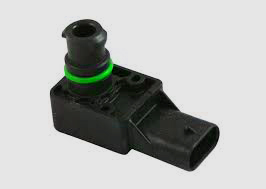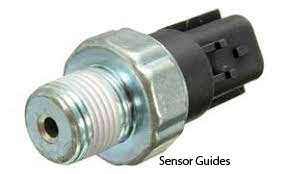LT1 Coolant Temp Sensor Symptoms Explained; By Sensor Guides
General Motors’ LT1 engine is a high-performance small-block engine. The temperature of the engine coolant, as with any internal combustion engine, is an important factor that influences engine performance and efficiency.
Vehicles equipped with the LT1 engine use a coolant temperature sensor to accurately monitor the engine coolant temperature. When this sensor begins to fail or malfunction, it can result in a variety of symptoms that affect the engine’s performance, efficiency, and overall health.
In this article, we’ll look at the most common symptoms of a failing coolant temperature sensor in vehicles equipped with the LT1 engine, as well as what causes these problems and how to diagnose and repair them.
Table of Contents
What is the function of a coolant temp sensor in a LT1 engine?
In an LT1 engine, the coolant temperature sensor is critical for monitoring the temperature of the engine coolant. The engine control module (ECM) uses this data to regulate various engine functions such as:
Engine performance: The ECM uses coolant temperature data to optimize engine performance by adjusting the air/fuel mixture, ignition timing, and other parameters.
Fuel efficiency: The ECM uses coolant temperature data to optimize the air/fuel mixture for maximum efficiency, which can lead to increased fuel economy.
Emissions control: The ECM uses coolant temperature data to control the emissions control system, which includes the catalytic converter and evaporative emissions control system.
Engine protection: The ECM uses coolant temperature data to activate the engine overheat warning light and protect the engine from damage if it gets too hot.
Overall, the coolant temperature sensor ensures that the engine operates at peak performance and efficiency while also protecting it from overheating damage.
LT1 engine coolant temp sensor symptoms
Common symptoms of a failing coolant temperature sensor in an LT1 engine include:
Engine warning light: An illuminated engine warning light on the dashboard is one of the first signs of a failing coolant temperature sensor.
Engine performance issues: If the ECM receives incorrect coolant temperature data, it may make incorrect engine adjustments, resulting in rough idle, reduced power, or stalling.
Problems with fuel efficiency: A failing coolant temperature sensor can cause the ECM to make incorrect adjustments to the air/fuel mixture, resulting in lower fuel efficiency and higher fuel consumption.
Engine overheating: If the coolant temperature sensor fails, the ECM may not receive accurate information about the engine coolant temperature, resulting in incorrect cooling system control and the engine potentially overheating.
Poor emissions control: A failing coolant temperature sensor can cause the ECM to make incorrect adjustments to the emissions control system, resulting in higher emissions and the vehicle potentially failing an emissions test.
Engine misfire: If the ECM receives incorrect coolant temperature data, it may make incorrect ignition timing adjustments, resulting in an engine misfire.
Engine stalling: A failing coolant temperature sensor can cause the ECM to make incorrect engine adjustments, resulting in stalling, especially when driving at idle or low speeds.
If you notice any of these symptoms, you should have the coolant temperature sensor inspected and replaced as soon as possible to avoid further engine damage.
What is the most common symptom?
An illuminated engine warning light on the dashboard is the most common symptom of a failing coolant temperature sensor in an LT1 engine. This warning light is typically accompanied by one or more of the following symptoms: engine performance issues, fuel efficiency issues, engine overheating, and engine stalling.
How to test the coolant temp sensor?
There are two common methods to test a coolant temperature sensor:
- Multimeter Test:
- Turn off the engine and disconnect the electrical connector from the sensor.
- Set the multimeter to measure resistance (ohms) and connect the leads to the sensor terminals.
- The resistance of the sensor should change as the engine temperature changes. You can compare the readings with the specifications for the sensor, or check the sensor resistance while heating it with a hot air gun and compare it to the resistance at room temperature.
- If the resistance readings are outside the specified range, the sensor is likely faulty and needs to be replaced.
- Circuit Test:
- Locate the coolant temperature sensor wiring in the electrical circuit diagram.
- Disconnect the sensor and use a test light to check if there is voltage on the signal wire.
- Start the engine and check the voltage while the engine warms up. The voltage should fluctuate as the engine temperature changes.
- If the test light doesn’t come on or the voltage readings are outside the specified range, the sensor or its wiring is likely faulty and needs to be checked and repaired.
Note: Always consult the vehicle’s service manual for specific testing procedures and specifications for your vehicle.
Some related FAQs.
What happens when a coolant temperature switch goes bad?
If the coolant temperature sensor fails, your car engine may become overheated. While a faulty sensor may occasionally send a permanent cold signal to the engine, it may also send a permanent hot signal.
Can you clean a coolant temperature sensor?
Most of the time, there is little to clean and reuse because when a sensor becomes out of calibration due to wear or mechanical damage, or fails due to heat damage, the only repair is to replace it.





